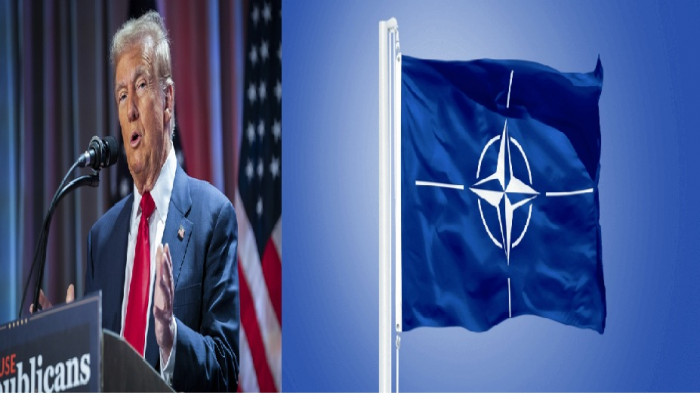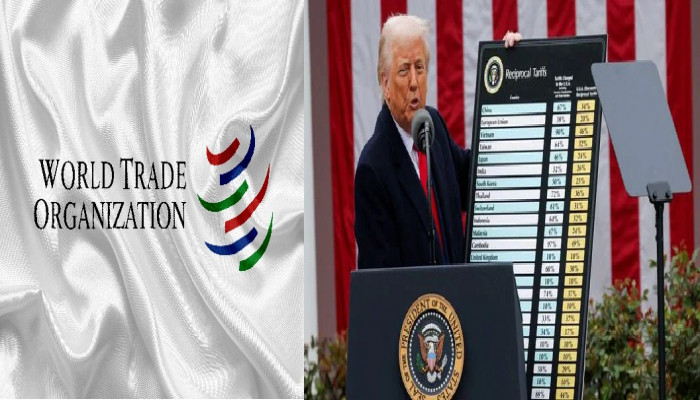Joe Biden approves secret nuclear strategy focusing on Chinese threat: Report
- In Reports
- 12:57 PM, Aug 21, 2024
- Myind Staff
In March, President Biden approved a highly classified nuclear strategic plan for the United States that, for the first time, shifts the focus of America's deterrent strategy towards China's rapidly expanding nuclear arsenal.
This change comes as the Pentagon anticipates that China's stockpile will rival the size and diversity of those of the United States and Russia within the next decade.
The White House did not publicly announce that President Biden had approved the revised strategy, known as the "Nuclear Employment Guidance," which now also aims to prepare the United States for potential coordinated nuclear threats from China, Russia, and North Korea. This document, updated approximately every four years, is so highly classified that no electronic copies exist; only a limited number of hard copies have been distributed to select national security officials and Pentagon commanders.
In recent speeches, two senior administration officials were permitted to subtly reference the change, each doing so in carefully crafted, single sentences. A more detailed, unclassified notification to Congress is expected before President Biden leaves office.
“The president recently issued updated nuclear-weapons employment guidance to account for multiple nuclear-armed adversaries,” Vipin Narang, an M.I.T. nuclear strategist who served in the Pentagon, said earlier this month before returning to academia. “And in particular,” he added, the weapons guidance accounted for “the significant increase in the size and diversity” of China’s nuclear arsenal.
In June, Pranay Vaddi, the National Security Council’s senior director for arms control and nonproliferation, referenced the document, which is the first to assess in detail whether the United States is equipped to respond to simultaneous or sequential nuclear crises using a combination of nuclear and non-nuclear weapons.
The new strategy, Mr. Vaddi said, emphasises “the need to deter Russia, the PRC and North Korea simultaneously,” using the acronym for the People’s Republic of China.
Previously, the possibility that American adversaries could coordinate nuclear threats to outmanoeuver the US nuclear arsenal seemed remote. However, the growing partnership between Russia and China, along with the conventional arms North Korea and Iran are supplying to Russia for the war in Ukraine, has fundamentally altered Washington’s perspective.
Russia and China are already conducting joint military exercises, and intelligence agencies are investigating whether Russia is supporting North Korean and Iranian missile programmes in return.
The new document serves as a stark reminder that the next president, sworn in on 20 January, will face a significantly altered and more volatile nuclear landscape compared to just three years ago. President Vladimir Putin of Russia has consistently threatened the use of nuclear weapons against Ukraine, including during a crisis in October 2022. At that time, President Biden and his aides, analysing intercepts of conversations between senior Russian commanders, feared that the probability of nuclear use could rise to 50 percent or even higher.
So far in the presidential campaign, the new challenges to American nuclear strategy have not been a topic of debate. President Biden, who has long been a proponent of nuclear non-proliferation, has not publicly discussed in detail how he is addressing the challenges posed by the expanded nuclear forces of China and North Korea. Vice President Kamala Harris, now the Democratic Party’s nominee, has also not addressed these issues in public.
At his last news conference in July, just days before announcing his decision to withdraw from seeking a second term, President Biden did acknowledge that he had adopted a policy aimed at countering the broader China-Russia partnership.
“Yes, I do, but I’m not prepared to talk about the detail of it in public,” Mr. Biden said. He made no reference to — and was not asked about — how that partnership was altering American nuclear strategy.
Since Harry Truman’s presidency, the US nuclear strategy has predominantly focused on the Kremlin’s arsenal. President Biden’s new guidance indicates a rapid shift in this focus.
China was mentioned in the previous nuclear guidance, issued at the end of the Trump administration, according to an unclassified account provided to Congress in 2020. However, this was before the full extent of President Xi’s ambitions became clear.
The Biden strategy sharpens the focus on China, reflecting Pentagon estimates that China’s nuclear arsenal could expand to 1,000 by 2030 and 1,500 by 2035, comparable to the current numbers of the United States and Russia. In fact, Beijing appears to be ahead of this timeline, having begun to load nuclear missiles into new silo fields identified by commercial satellites three years ago.
Another concern is that Beijing has halted a brief dialogue with the United States aimed at improving nuclear safety and security. This dialogue included discussions about warning each other of impending missile tests and establishing hotlines or other communication channels to prevent incidents from escalating into nuclear conflicts.
This discussion occurred late last fall, just before President Biden and President Xi met in California to seek to repair bilateral relations. Although the talks were mentioned in a joint statement, by that time China had already signalled a lack of interest in continuing the dialogue. Earlier this summer, China officially ended the discussions, citing American arms sales to Taiwan, which had been ongoing long before the nuclear safety talks commenced.
Mallory Stewart, the assistant secretary for arms control, deterrence and stability at the State Department, said in an interview that the Chinese government was “actively preventing us from having conversations about the risks.”
Instead, she said, Beijing “seems to be taking a page out of Russia’s playbook that, until we address tensions and challenges in our bilateral relationship, they will choose not to continue our arms control, risk reduction and nonproliferation conversations.”
It was in China’s interest, she argued, “to prevent these risks of miscalculation and misunderstanding.”
Following a New York Times report, the White House stated on Tuesday the classified nuclear strategic plan approved by President Joe Biden this year is not aimed at a single country or threat.
The U.S.-based Arms Control Association indicated that the U.S. nuclear weapons strategy and posture remain consistent with those outlined in the administration's 2022 Nuclear Posture Review, and there has been no shift in focus away from Russia towards China.
Image source: The New York Times



.jpeg)























Comments